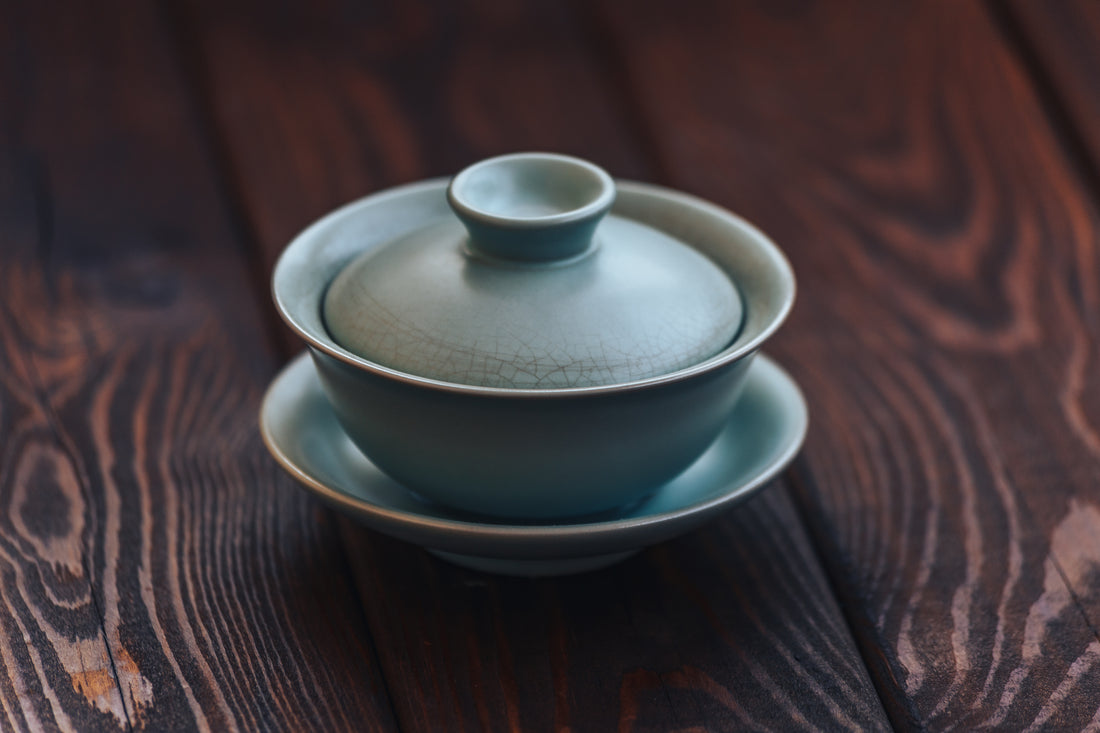The Gaiwan is a traditional Chinese tea vessel that has stood the test of time and transcended various cultural boundaries. It remains a popular choice among tea enthusiasts, not just for its simplicity and affordability but for the pure and refined tea experience it offers. This article will explore the Gaiwan's design, origins, usage, particularly in brewing tea Gong Fu Cha style, and the versatile nature that allows it to be used with any type of loose leaf tea.
The Design of the Gaiwan
A Gaiwan consists of three parts:
- Bowl: This is where the tea leaves and water are combined.
- Lid: Used to control the steeping process and to strain the tea leaves when pouring.
- Saucer: Allows for handling without touching the hot bowl itself.
The Gaiwan is typically made from porcelain or ceramics, which don't absorb tea flavors, allowing the true taste to shine through. Occasionally, Gaiwans are made from glass or even the rare Yixing clay, offering different aesthetics and subtle variations in brewing characteristics.

Origins of the Gaiwan
The Gaiwan has its roots in the Ming Dynasty in China. Its elegant design symbolizes the traditional Chinese virtues of simplicity, functionality, and connection to nature. The fact that Gaiwans are often a little cheaper than teapots has helped them spread in popularity, but this affordability doesn't come at the expense of quality or performance.
Gaiwan in Gong Fu Cha Style Brewing
Gong Fu Cha, meaning "making tea with effort," is a traditional Chinese tea ceremony that emphasizes precision and mindfulness. The Gaiwan plays a central role in this method, and here's how:
- Preheating: Pour hot water into the Gaiwan to preheat it, then discard the water.
- Adding Tea Leaves: Place the loose leaf tea in the Gaiwan's bowl.
- Pouring Water: Pour hot water over the tea leaves, allowing them to swirl and expand.
- Steeping: Cover the Gaiwan with the lid and let the tea steep for a time appropriate to the type of tea.
- Pouring: Using the lid to hold back the leaves, pour the tea into a serving pitcher or directly into the cups.
- Re-Steeping: Many high-quality teas can be re-steeped multiple times, offering different flavors and aromas with each infusion.
Versatility with Different Teas
While often associated with delicate teas like green, white, and oolong, the Gaiwan's design allows for the brewing of any type of loose leaf tea. Its wide bowl permits the leaves to expand fully, and the lid's control over steeping makes it adaptable to different tea types and personal preferences.

Conclusion
The Gaiwan is a testament to the wisdom and artistry of traditional Chinese tea culture. Its elegant design, affordability, and adaptability make it a prized possession for many tea lovers. Whether used in the precise and ceremonial Gong Fu Cha style or a more casual setting, the Gaiwan offers a pure and intimate tea experience.
Its suitability for any type of loose leaf tea, combined with its rich cultural heritage, means that a Gaiwan can be both an entry point for those new to tea and a continual source of discovery for the seasoned connoisseur. It represents a beautiful synthesis of form, function, and philosophy, all in service of the timeless enjoyment of tea.


